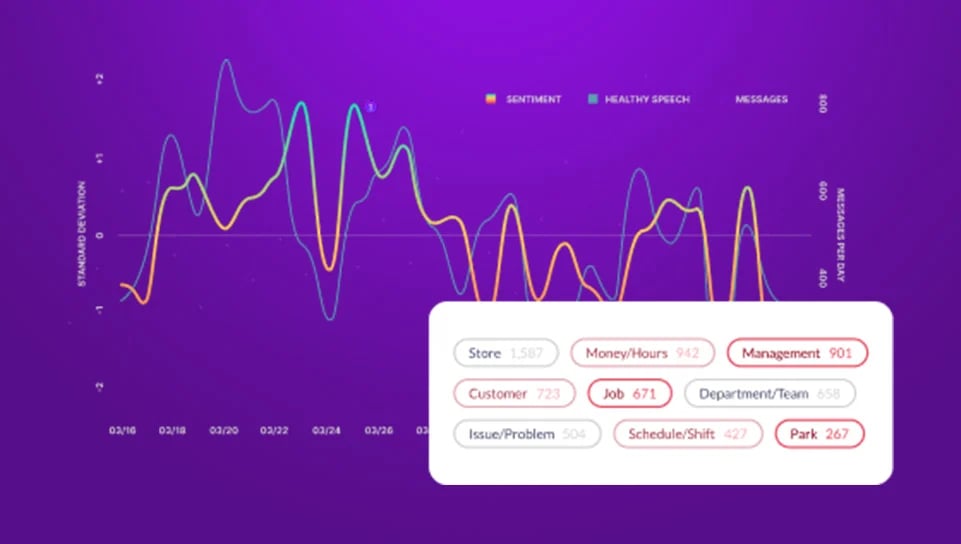WHITEPAPER
The Human Behavior Risk Analysis
Uncover employee behavior that could threaten your organization
1:1 conversations are 250% more likely to be toxic
Protect your security, compliance, and culture
Collaboration platforms like Slack, Microsoft Teams, Cisco Webex. and Workplace from Meta can be a huge asset for your organization. But they can also introduce risks caused by human behavior. Understanding those risks is the first step to protecting your digital workplace and safeguarding your security, compliance, and culture.
Let us be clear
This Human Behavior Risk Analysis Report is not intended to scare leaders, nor block the full implementation of enterprise collaboration platforms.The purpose of this report is to expose collaboration blind spots and illustrate where technology—and rapid advancements in machine learning, in particular—can play a key role in helping to understand and manage collaboration.
- Discover how to proactively uncover and manage unpredictable behavior
- Maximize the benefits of collaboration while controlling for risks
- Learn where toxicity exists within your digital workplace
- Boost your brand reputation by rewarding and reinforcing positivity

Download the whitepaper
MORE FROM AWARE
Subscribe to Aware’s Newsletter
A monthly digest of the latest news, articles, and resources








